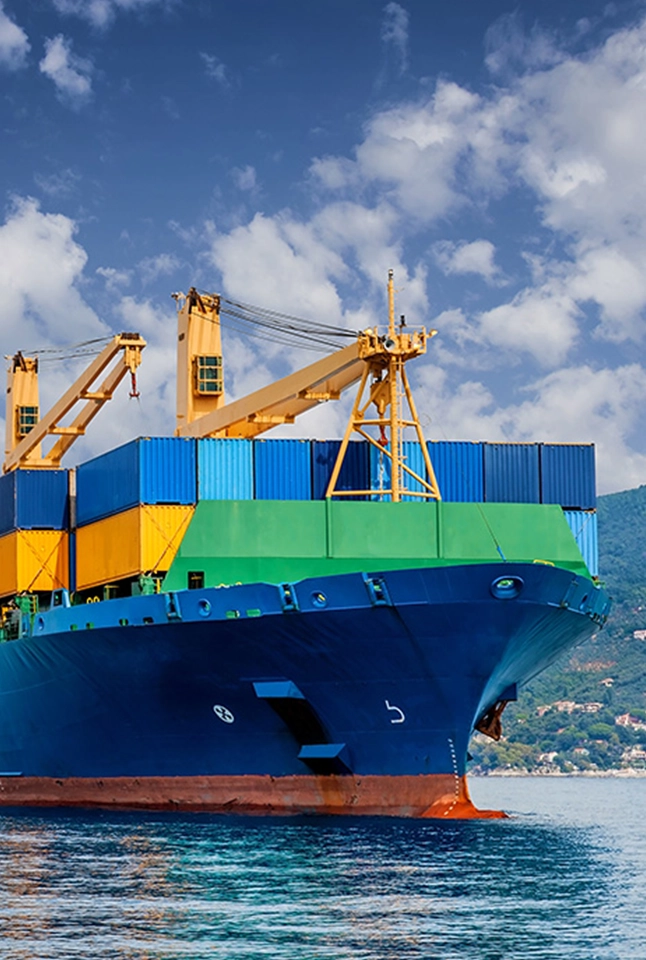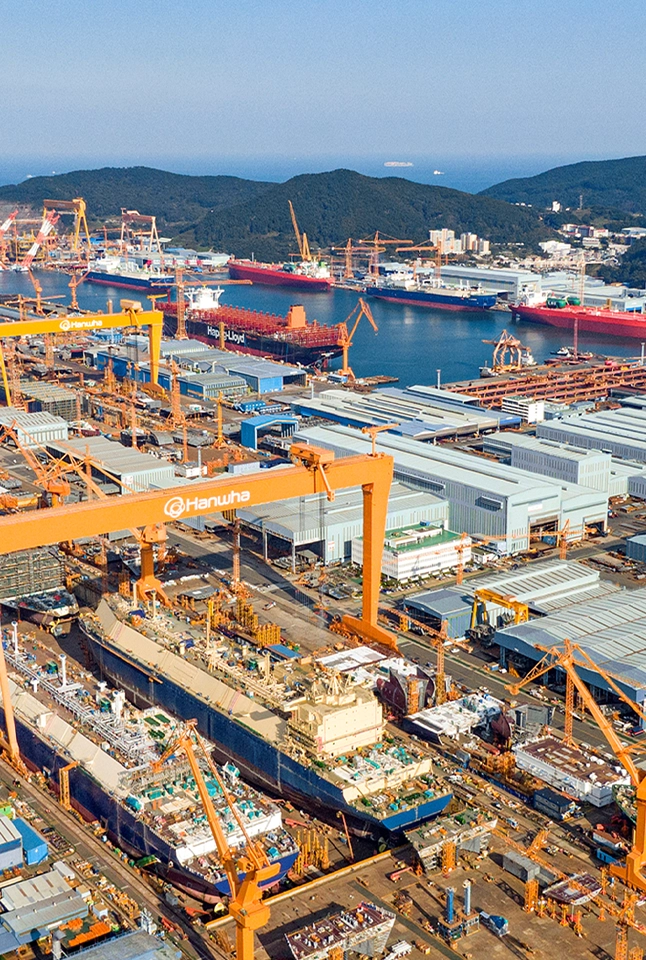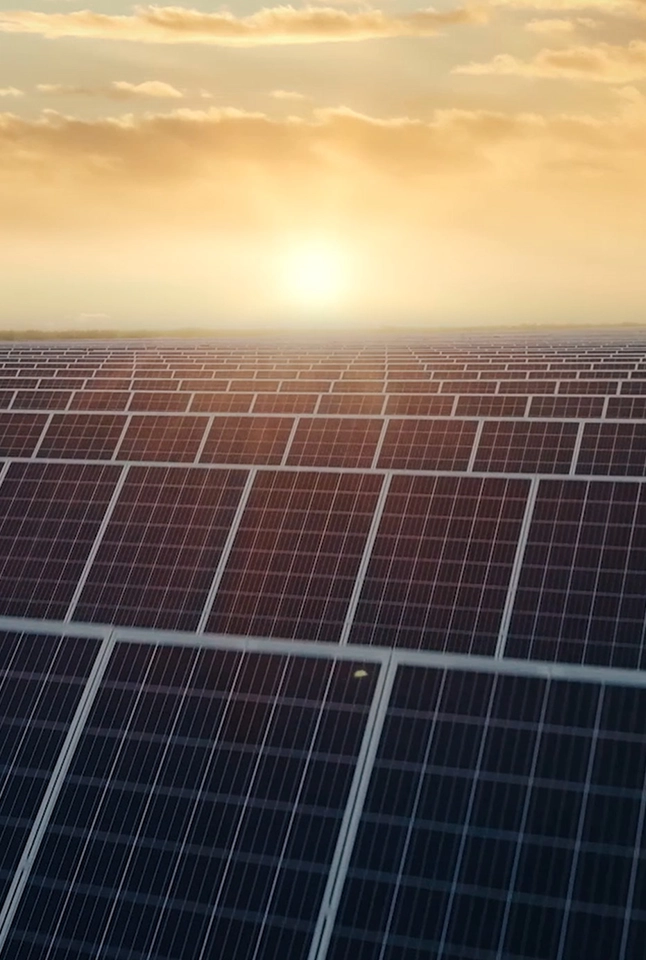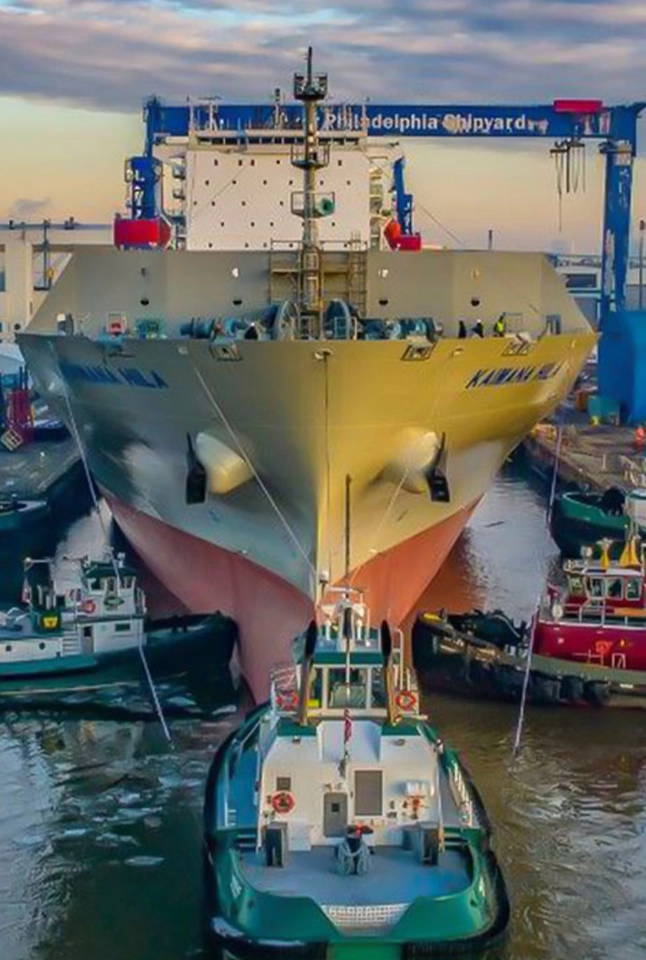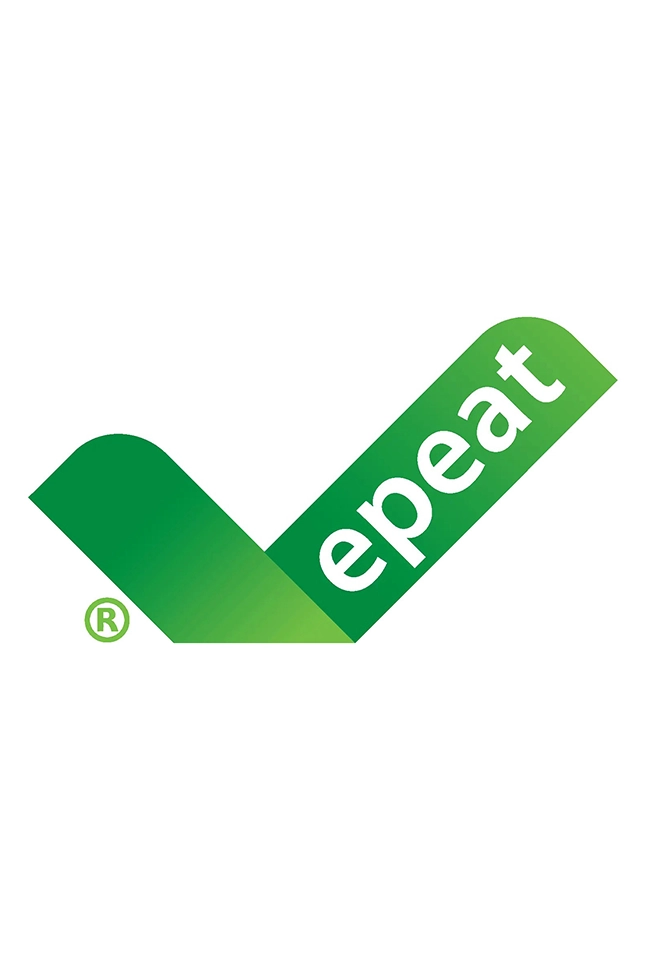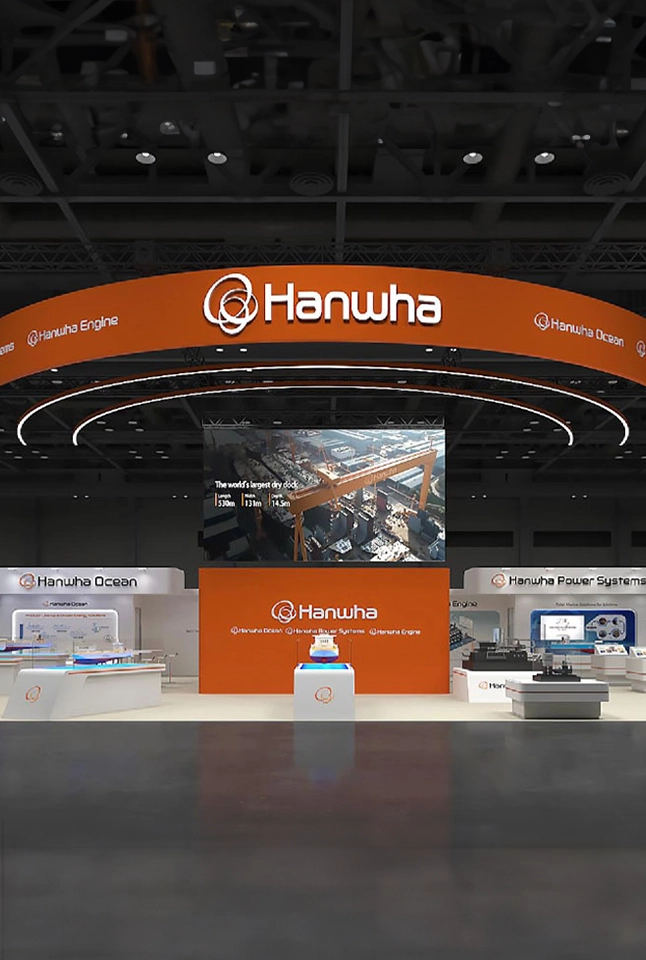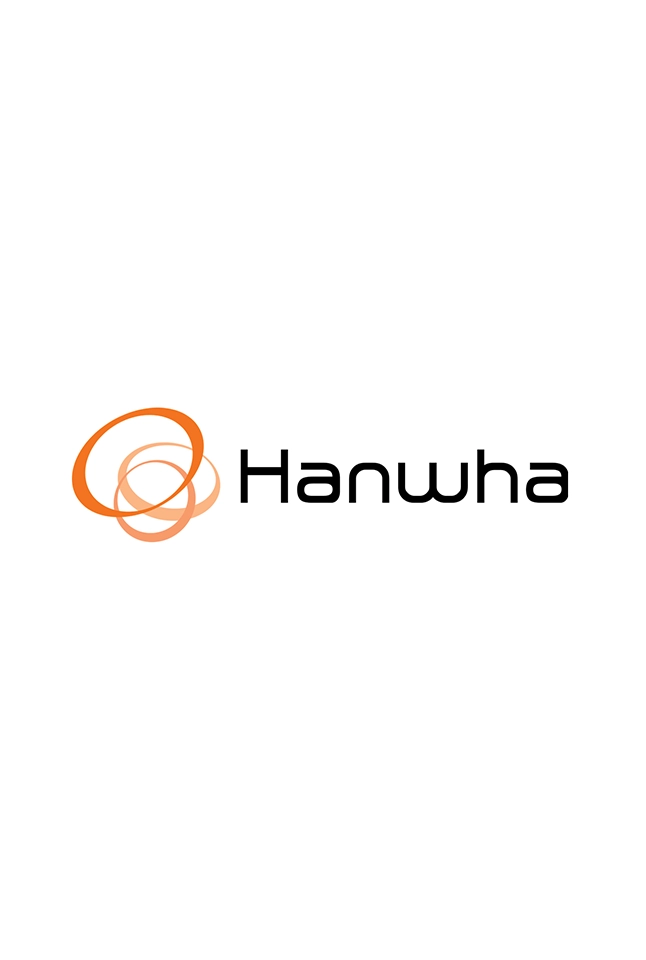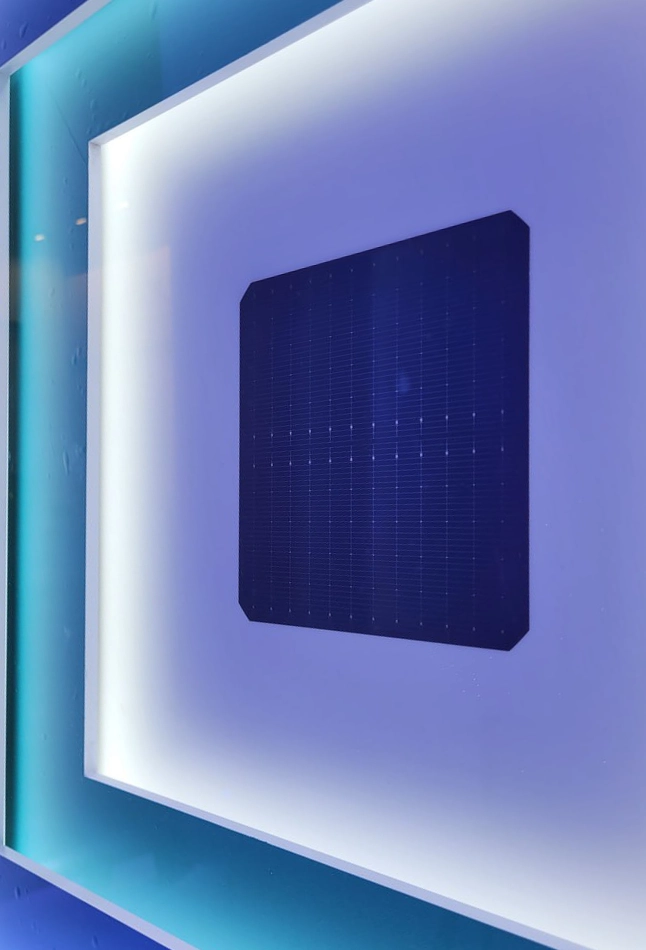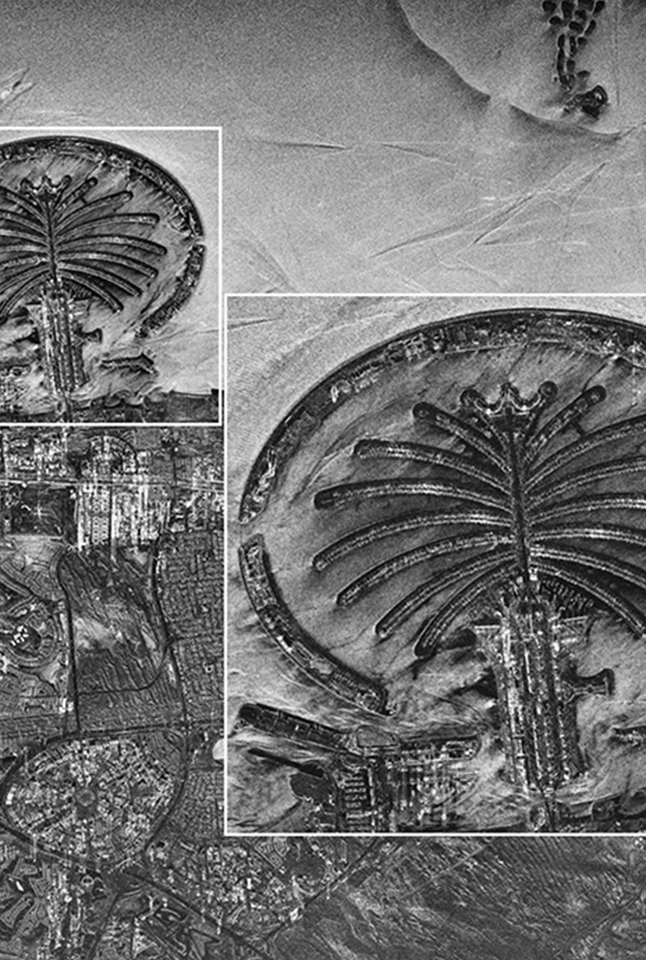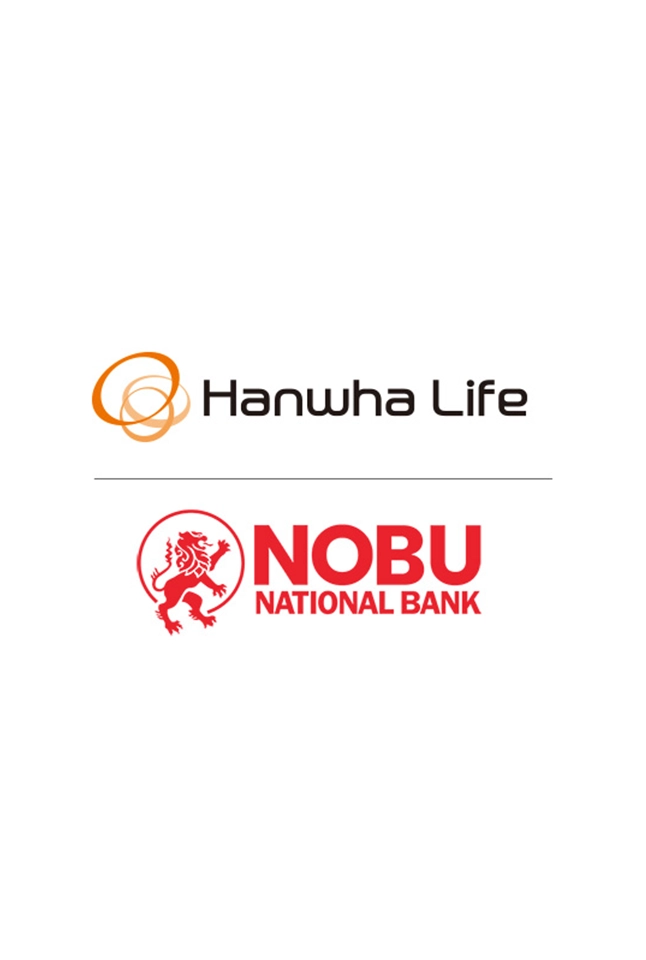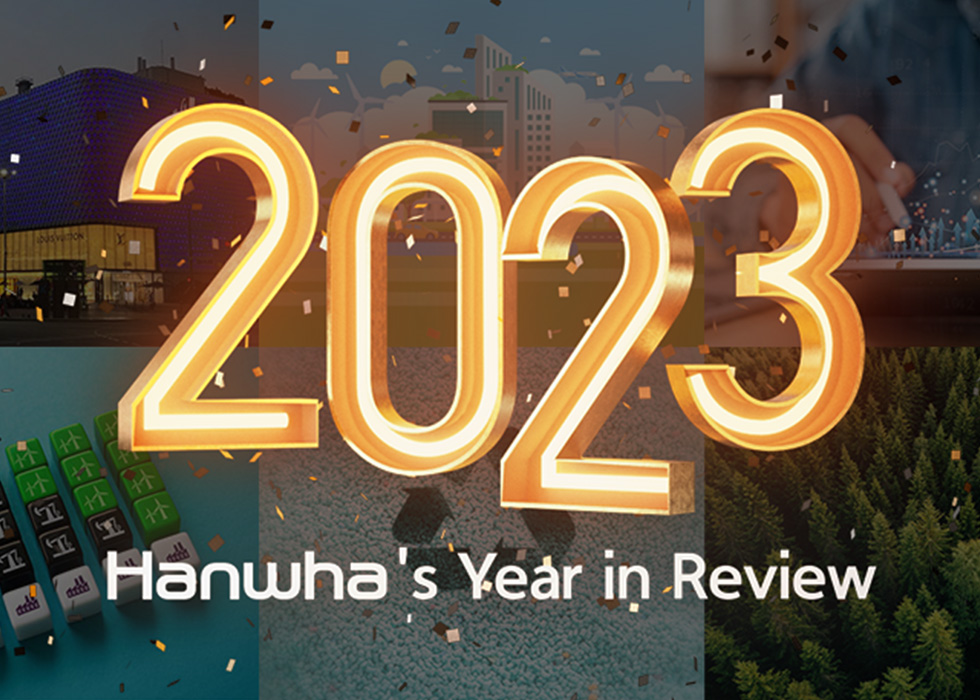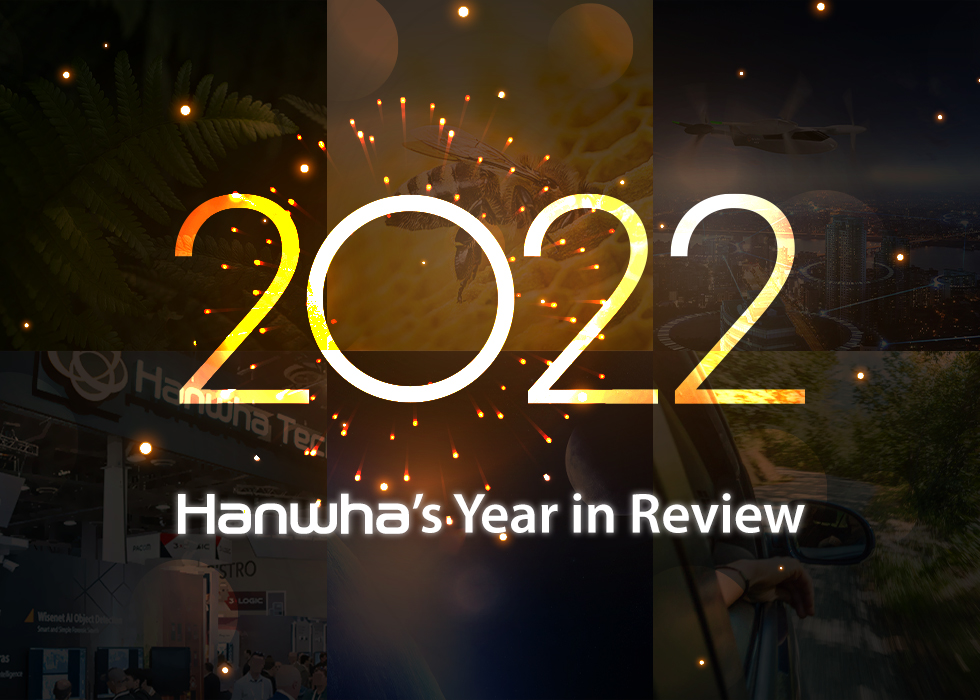Hanwha’s year in review 2024

In 2024, Hanwha achieved significant milestones in addressing global challenges, delivering transformative advancements in clean energy, maritime decarbonization, global shipbuilding, and space exploration. Hanwha drove impactful solutions through cutting-edge technologies and strategic global expansion, shaping industries and addressing critical global needs.
Let’s revisit the defining moments of Hanwha’s year, explore what innovation means, and celebrate Hanwha’s contributions to a more connected and resilient future.
Top 7 most viewed stories of 2024
As the world pushes toward ambitious net-zero goals, Hanwha has adopted a multidimensional approach to the energy transition, addressing decarbonization challenges while driving advancements in solar energy, shipping, and other innovative technologies.
At the start of the year, Hanwha unveiled a comprehensive roadmap for advancing maritime decarbonization at the World Economic Forum in Davos. Hanwha’s strategy includes developing green ship technologies, including engines that can be powered by alternative fuels like ammonia and hydrogen, with the ultimate goal of creating the first zero-emission gas carrier. This approach aims to catalyze innovation in the shipping industry with advanced, future-ready vessels.
At Gastech 2024, Hanwha introduced next-generation ship designs for such vessels, powered by alternative fuels, emphasizing the critical role of green ship technology in decarbonization. Hanwha Ocean also introduced its carbon intensity index (CII) monitoring technology, integrated into its Hanwha SmartShip Solution & Service (HS4), which enables shipowners to optimize operations and reduce CO2 emissions. Hanwha Ocean and Hanwha Systems also acquired Philly Shipyard, expanding Hanwha’s global presence, supporting naval systems deployment, and creating opportunities for its advanced technologies to be deployed in the U.S. market.
Throughout 2024, Hanwha further solidified its leadership in clean energy. At CERAWeek 2024, Hanwha emphasized the critical role of scaling renewable energy to meet climate goals and highlighted its broader efforts in driving the clean energy transition. Hanwha also continued its work building out an end-to-end supply chain within the U.S., creating a holistic ecosystem to foster innovation and expand access to clean energy.
Through the "Envisioning the Future" series, Danielle Merfeld, CTO of Hanwha Qcells, reflected on the rapid growth of the solar energy industry, the challenges of scaling production, and the innovative solutions Hanwha is deploying, including working to commercialize perovskite tandem technology at scale. These solutions address industry demand for greater efficiency and enhanced energy output. At the same time, Hanwha Qcells’ U.S.-assembled solar panels earned EPEAT certification, recognizing them as one of the most sustainably produced options in the U.S. This recognition places a requirement on the U.S. federal government, one of the largest energy purchasers, to procure sustainably produced solar panels, which is triggered when three or more EPEAT-registered products by two or more manufacturers are available. This landmark shift expands the adoption of eco-friendly solar solutions across federal operations, advancing renewable energy use and reducing environmental impact.
Together, these stories highlight Hanwha’s pivotal role in leading the energy transition and shaping a greener future. Explore the links below for more details on these top stories highlighting Hanwha’s bold advancements in 2024.
Editor’s picks for 2024
Hanwha's top stories highlight major accomplishments, but the year was also defined by additional successes across its diverse portfolio. Hanwha Newsroom has curated a selection of additional standout moments that defined the year.
Hanwha's innovative work in clean energy, green shipping, and other transformative areas earned it a spot on TIME’s list of the TIME100 Most Influential Companies. This recognition highlights Hanwha’s impactful contributions to addressing global challenges.
In a significant step for solar technology, Hanwha Qcells achieved a new world record of 28.6% efficiency on a full-area M10-sized (330.56 cm²) perovskite tandem solar cell. Perovskite tandem solar cells, which layer perovskite’s crystal structure on top of a conventional solar cell’s silicon base, improve performance by capturing high-energy light more efficiently on the top cell, while low-energy light is transmitted and captured by the bottom cell. This increases the amount of sunlight that can be transformed into energy, meaning fewer modules are needed to achieve the same power output. Unlike lab-scale demonstrations, Hanwha Qcells’ development approach focuses on commercial processes and tools that are scalable for mass manufacturing. This achievement is poised to accelerate the commercialization of more efficient and affordable solar energy.
In the realm of space exploration, Hanwha was selected to lead Korea’s next-generation space rocket project, laying the groundwork for a planned lunar mission by 2032. Hanwha Systems also unveiled high-resolution images captured by its small SAR satellite. These advancements not only showcased the company’s technological capabilities but also opened new possibilities for environmental monitoring and disaster management.
In the finance sector, Hanwha Life's strategic investment in Nobu Bank, a mid-sized Indonesian bank, marked a significant step toward becoming a global integrated financial company and expanding its presence in Southeast Asia. Hanwha is also enhancing access to personalized financial services, leveraging AI-powered applications such as optical character recognition (OCR) to streamline claims processes, reduce errors, and enhance efficiency. The implementation of these digital services can also help to reduce costs, manage fraudulent claims, and improve customer retention.
Meanwhile, Hanwha is leveraging collaborative robots (cobots) to enhance productivity, safety, and quality across multiple industries. In shipbuilding, cobots handle tasks like welding and painting, reducing risks and ensuring consistent results. Beyond manufacturing, Hanwha Robotics’ HCR-5A cobots are used in production lines and food service roles such as baristas or cooks. Hanwha Hotels & Resorts is exploring cobot applications in facility management and security, highlighting Hanwha’s efforts to integrate advanced technology for safer and more efficient workplaces.
Dive deeper into Hanwha’s innovative solutions across a wide range of industries by checking out the full articles through the links below.
Get the latest news about Hanwha, right in your inbox.
Fields marked with * are mandatory.
- Non-employee
- Employee


